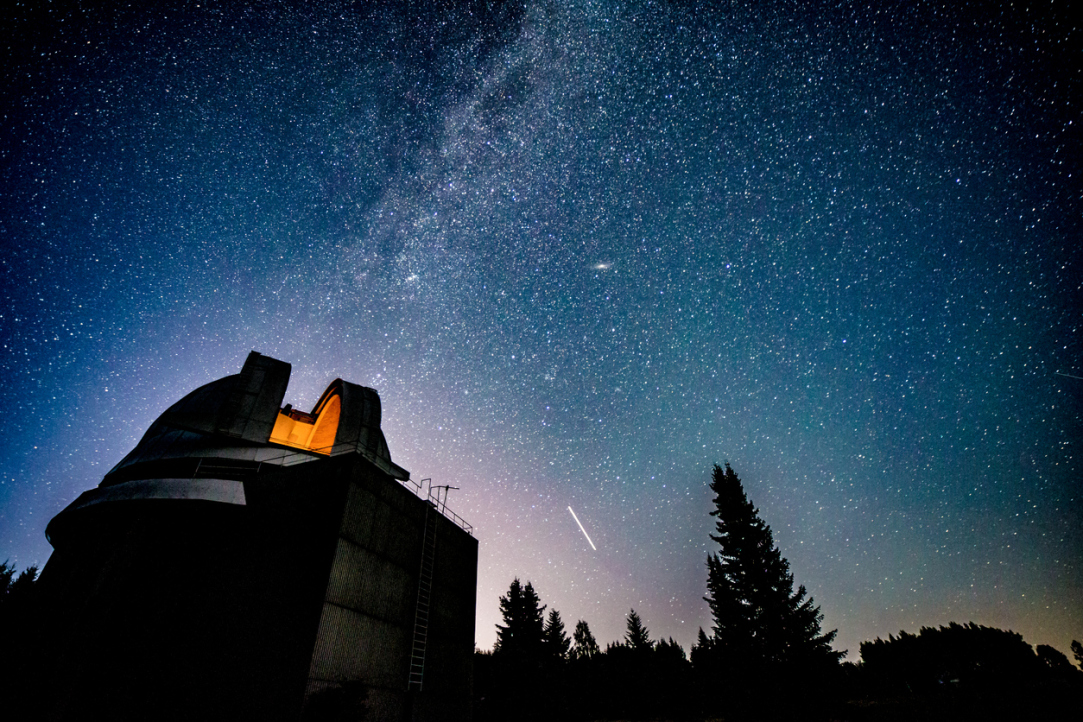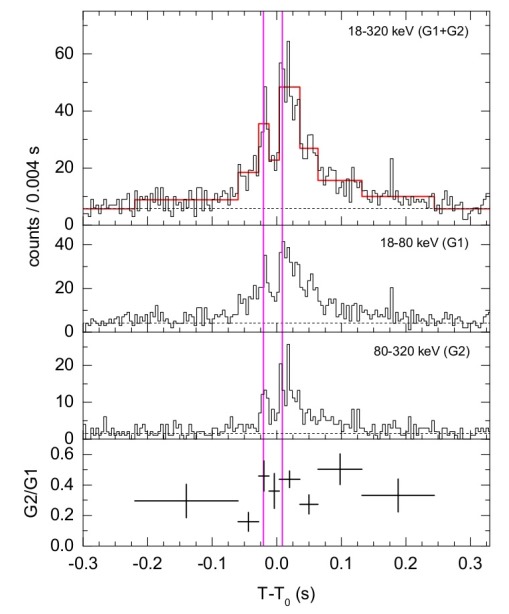First Simultaneous Observation of a Fast Radio Burst in Radio and Gamma Bands

A team of scientists from the Ioffe Physical-Technical Institute, HSE University, Sternberg Astronomical Institute (SAI) and NASA announced the first simultaneous observation of a fast radio burst from a galactic object and its 'equivalent' in the X-ray range. The source direction of the burst coincides with the position of the active magnetar SGR 1935+2154, and analysis of the signal in the two energy bands will improve our understanding of the nature of fast radio burst phenomena. The results are published in the journal Nature Astronomy.
Fast radio bursts are short-lived pulses observed in the radio energy band, the nature of which is still not fully understood. Various astrophysical objects have been proposed by scientists as generators of fast radio bursts and, for example, magnetars are among the promising candidates.
Magnetars are young neutron stars with the strongest magnetic fields in the universe. However, most magnetars rotate and emit short pulses of photons in the X-ray range during their active phase; the activity itself can last for several days or more than a year.
Magnetar SGR 1935+2154 was discovered relatively recently, in 2014, by observing a series of short bursts. It is near the centre of one of the supernova remnants in our galaxy and has become one of the most active magnetars known since its discovery. The latest burst began in April 2020 and peaked on April 27.

The next day CHIME recorded a fast radio burst from the direction of SGR 1935+2154, while INTEGRAL, AGILE, KONUS-WIND and Insight-HXMT detected a burst of magnetar activity in the gamma-ray band.
‘The source of the outbursts is definitely the galactic magnetar SGR 935+2154. The outburst has a very interesting structure with two peaks observed both in the gamma-ray and radio bands and coinciding in their arrival times. For the first time a magnetar flare accompanied by a short radio pulse was observed. This discovery gives reason to believe that the mysterious fast radio bursts are correlated with the activity of magnetars,’ commented the author of the paper, Sergei Popov, Associate Professor at the Faculty of Physics at HSE University.
Data from the KONUS gamma-ray transient spectrometer on NASA's WIND spacecraft were used to analyse the spectrum. The technical equipment of the spectrometer was developed by staff at the Ioffe Physical-Technical Institute to observe cosmic gamma-ray bursts, repeated surges from neutron stars in our galaxy and solar flares. The project itself recently celebrated 25 years of continuous operation.

CONUS is equipped with two scintillation gamma-ray spectrometers, which enable it to continuously monitor the entire celestial sphere. The energy range in which the instrument operates is 20 keV to 15 MeV, and KONUS has recorded over 3,000 gamma-ray bursts during its lifetime, sometimes providing unique data for scientists to study.
The spectral analysis of the burst, as well as its total energy release in perspective, also allows some theoretical conclusions to be drawn about the mechanisms of radiation formation in magnetars.
Models explaining the formation of fast radio bursts in magnetars can be divided into two large groups. The first assumes that radiation is produced by the interaction of the flux of high-energy particles emitted by the magnetar with the surrounding matter. The second group of theories draws an analogy with solar flares: currents supporting the magnetic field inside the neutron star gradually shift to the outer envelope, where they can effectively disperse into the external medium and interact with it.
The analysis of the spectrum obtained with the CONUS spectrometer shows no clear-cut conclusions about one class of model or the other, but the atypical object SGR 1935+2154 remains an important target for astronomers’ future observations of fast gamma-ray bursts.
Sergei Popov
See also:
Dust Cloud around the Moon
HSE researchers, together with colleagues from Space Research Institute of RAS, MIPT, and the University of Colorado, ventured to find out where the plasma-dust cloud around the Moon comes from. To do this, they compared theoretical calculations with experimental data and theorized that this cloud likely consists of matter that rose from the Moon’s surface as a result of meteoroid collisions.


